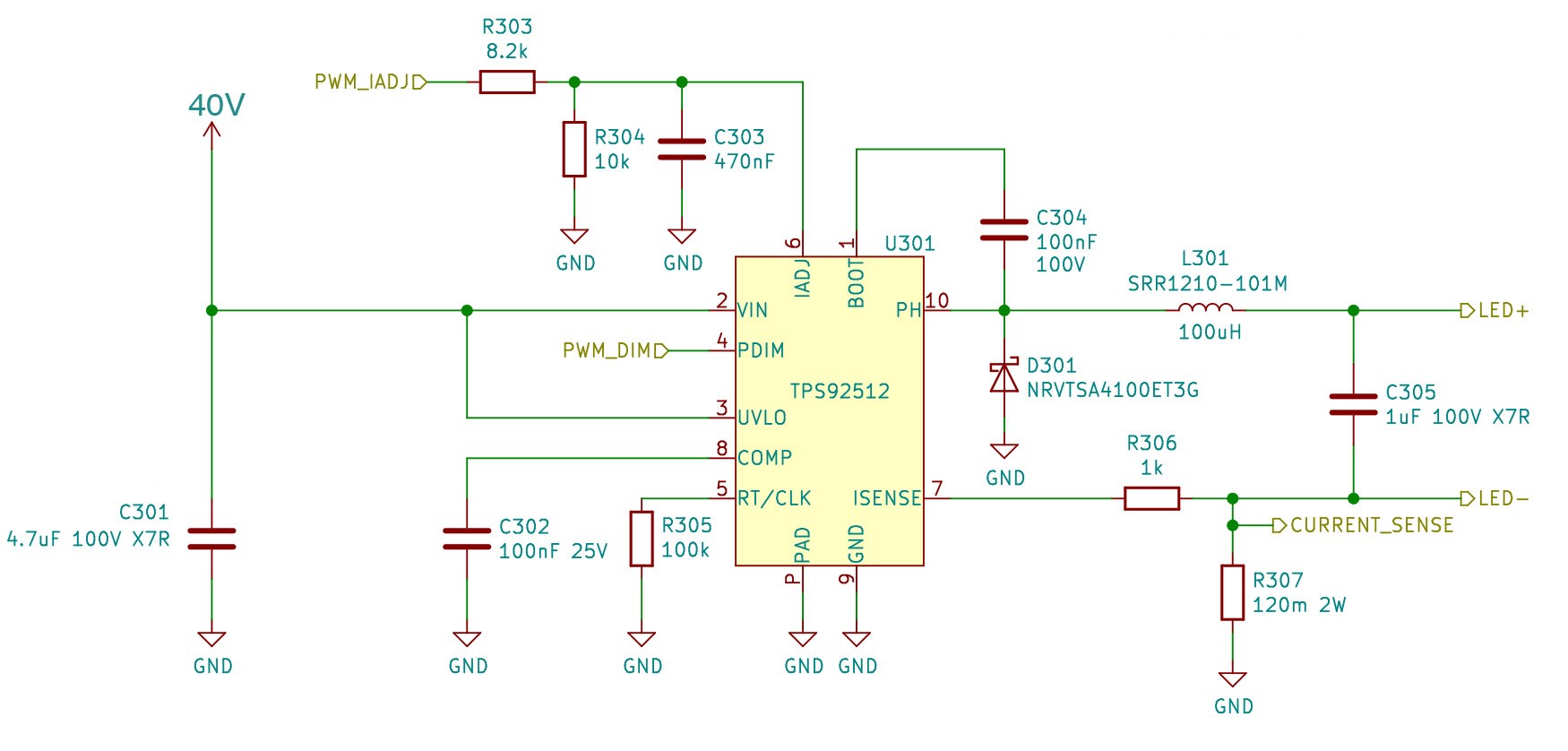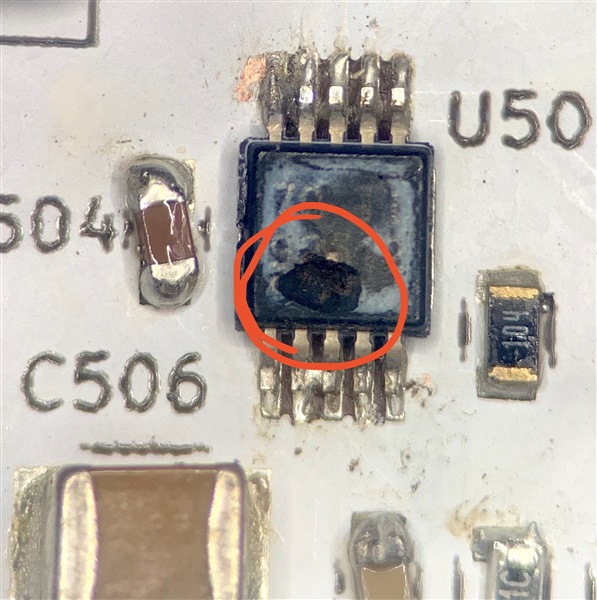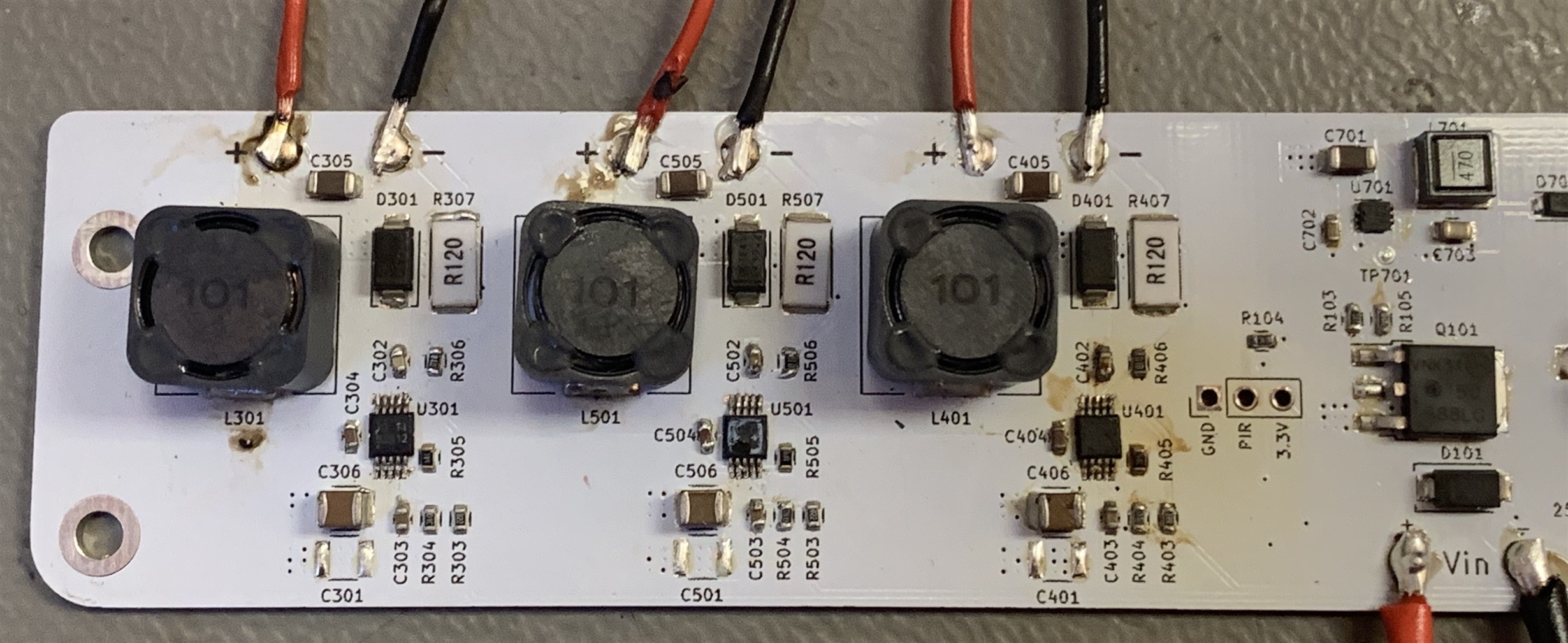Hi!
I have been working on getting a 2A LED driver working using the TPS92512 IC for the past couple of weeks.
The circuit does function to some extent (it lights up the LEDs for some time and can be PWM dimmed), but after a short amount of time 5-60 seconds the IC pops/explodes and shorting pin 9 and 10. Often it also causes the PWM pin of my STM32 to stop working. This happens also when running at low current ( < 200mA) and PWM duty cycle.
Originally I used a 60V Schottky diode for D301, which I was advised to upgrade to a 100V 3A Schottky. However this did not resolve my issue with the IC blowing up. I have now made a handful 4 layer PCBs with this which all have suffered from this. I have followed all PCB design guidelines and used high voltage capacitors/diodes. This happens for the HV and non-HV version of the IC.
Details:
- The power is turned on over about 100ms to avoid any LC spikes from the input capacitor and power supply leads.
- LED+ and LED- is connected to an array of 8 strings of 12 white LEDs in series - requiring about 36V to start lighting up.
Am I missing something and can I provide any extra information? (Photos, PCB layout)





